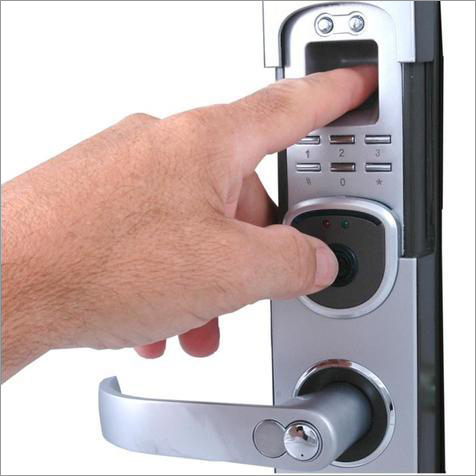Fingerprint Door Lock
Product Details:
- Material Plastic
- Usage Commercial
- Color Black Grey
- Product Type Fingerprint Lock Screen
- Click to View more
Fingerprint Door Lock Price And Quantity
- 11000 INR
- 9500.00 - 22000.00 INR
- 1 Piece
Fingerprint Door Lock Product Specifications
- Black Grey
- Commercial
- Plastic
- Fingerprint Lock Screen
Fingerprint Door Lock Trade Information
- Days
- boxes
- North India
Product Description
An individual's distinct fingerprint is used as a form of authentication via a fingerprint door lock, also known as a biometric door lock or fingerprint scanner lock, to provide entrance to a door or a building. These locks use biometric technology to detect and confirm the identity of the person attempting to gain admission rather than traditional keys or numerical codes.
The following actions are normally required in order for a fingerprint door lock to operate:
1. Enrollment: During initial setup, authorised users must enrol their fingerprints in the lock's database. By placing their finger on the scanner, they can have a digital image of their fingerprint pattern captured and stored. The software in the lock examines and transforms the fingerprint's distinctive characteristics into a template, which is a mathematical representation.
2. Authentication: To use the fingerprint scanner to enter a locked location, a person must place their finger on it. The lock's scanner then evaluates the provided fingerprint against the database's templates that have been previously recorded. If a match is made, the lock releases the locking mechanism or unlocks the door to allow access.
When compared to numeric keypad locks or conventional lock-and-key systems, fingerprint door locks provide a number of advantages.
1. Enhanced protection: Because each person's fingerprint is distinctive and challenging to copy or fake, fingerprint identification offers a high level of protection. It removes the chance of keys being misplaced or stolen or of someone figuring out a numerical code.
2. Convenience: Fingerprint door locks eliminate the need for keys and combination memory. It is convenient and quick because access is provided by just placing a registered finger on the scanner.
3. User Management: Multiple users can enrol in several fingerprint door locks, making it simple to grant or revoke access for particular people. This function is very helpful in settings like homes, offices, or other places where access needs to be restricted for certain users at various times.
4. Audit Trail: A logging system that maintains track of each entry or attempted entry is included with some high-tech fingerprint door locks. The administrators will be able to monitor and keep track of who has entered the building thanks to this function, which can be helpful for security reasons.
Even though fingerprint door locks are typically dependable and secure, they could have certain drawbacks. The accuracy of fingerprint identification can be impacted by factors like finger cleanliness and condition as well as environmental factors like severe heat or humidity. However, fingerprint door locks now function much more reliably and effectively thanks to advances in biometric technology.

Price:
- 50
- 100
- 200
- 250
- 500
- 1000+




